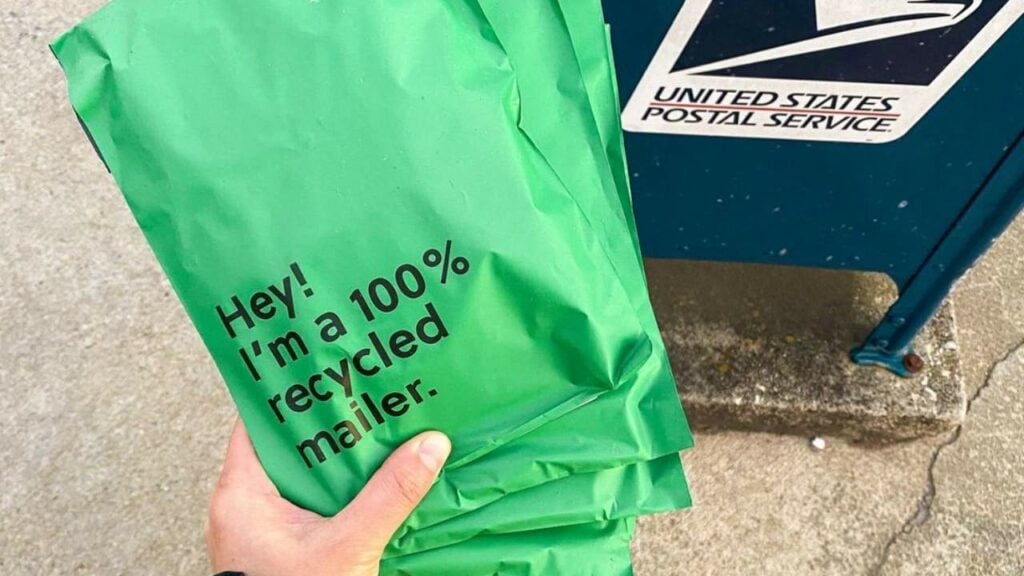
Reducing our carbon footprint is crucial for a healthier planet. One effective way to achieve this is through sustainable packaging. By adopting eco-friendly packaging practices, businesses can significantly lower their environmental impact.
This article will break down how sustainable packaging can help reduce carbon footprints.
Understanding Carbon Footprint
A carbon footprint measures the total greenhouse gases produced by human activities. It includes emissions from manufacturing, transportation, and disposal of products. Packaging contributes significantly to a product’s carbon footprint. Traditional packaging materials, like plastic and non-recycled paper, require substantial energy to produce. They also generate high emissions during production and transportation.
Switching to sustainable packaging can help reduce these emissions. Sustainable materials often require less energy to produce. They also reduce waste and promote recycling, further cutting down on greenhouse gas emissions. For example, using recycled paper instead of new paper saves energy and reduces emissions from logging and paper production.
Moreover, biodegradable packaging materials break down naturally, reducing the need for incineration or landfill disposal. This reduces methane emissions, a potent greenhouse gas. By understanding the carbon footprint of packaging, businesses can make informed choices to lower their environmental impact.
How Sustainable Packaging is Important
Choosing Sustainable Materials

Selecting the right materials is key to sustainable packaging. There are several eco-friendly options available. Recycled materials, like paper and cardboard, are a good start. They require less energy to produce and can be recycled again, reducing waste.
Biodegradable plastics, made from plant-based sources, are another option. They break down naturally, unlike traditional plastics that linger in the environment. Compostable packaging, which decomposes into nutrient-rich compost, is also beneficial. Materials like cornstarch, bagasse, and mushroom mycelium are popular choices.
Reusables, such as glass jars and metal containers, offer a long-term solution. They can be used multiple times, reducing the need for single-use packaging. Choosing sustainable materials not only helps reduce emissions but also aligns with consumer preferences for eco-friendly products.
Reducing Packaging Waste

Minimizing packaging waste is essential for lowering carbon footprints. Excessive packaging not only wastes resources but also increases emissions from production and disposal. Companies can take several steps to reduce packaging waste.
First, design packaging to use fewer materials. This can be achieved by optimizing the size and shape of the packaging. Smaller, lighter packaging reduces the amount of material needed and lowers transportation emissions.
Second, implement packaging take-back programs. Encourage customers to return packaging for recycling or reuse. This helps close the loop, ensuring materials are reused instead of discarded.
Third, invest in innovative packaging solutions. Edible packaging, for example, eliminates waste entirely. Brands can also explore refillable packaging, where customers can refill containers instead of buying new ones.
Improving Supply Chain Efficiency
Efficiency in the supply chain plays a crucial role in reducing carbon footprints. Efficient logistics and transportation can significantly cut emissions. Here’s how businesses can improve supply chain efficiency.
Consolidating shipments reduces the number of trips needed, lowering fuel consumption and emissions. Optimizing routes and using fuel-efficient vehicles also contribute to fewer emissions.
Adopting digital solutions, like advanced tracking systems, helps monitor and improve supply chain efficiency. These systems can identify inefficiencies and suggest improvements, leading to lower emissions.
Sourcing materials locally can also reduce transportation emissions. By choosing suppliers close to production facilities, businesses can cut down on long-distance transportation, further reducing their carbon footprint.
Engaging Consumers

Consumer engagement is vital for the success of sustainable packaging initiatives. Educating customers about the benefits of sustainable packaging can increase their support and participation.
Clear labeling on packaging helps consumers make informed choices. Labels indicating recyclable or biodegradable materials guide proper disposal, ensuring packaging doesn’t end up in landfills.
Marketing campaigns highlighting a company’s commitment to sustainability can also attract environmentally-conscious consumers. Sharing stories about the impact of sustainable packaging on reducing carbon footprints can build brand loyalty.
Offering incentives for returning packaging or participating in recycling programs encourages consumer involvement. These efforts not only reduce waste but also enhance a brand’s reputation as an environmentally responsible company.
Conclusion
Sustainable packaging is a powerful tool for reducing carbon footprints. By understanding the impact of packaging, choosing eco-friendly materials, reducing waste, improving supply chain efficiency, and engaging consumers, businesses can make a significant difference.
Embracing sustainable packaging practices is not only good for the planet but also beneficial for business, attracting consumers who value sustainability.
After all, who wouldn’t want to sharpen their brands with authentic, biodegradable materials?
